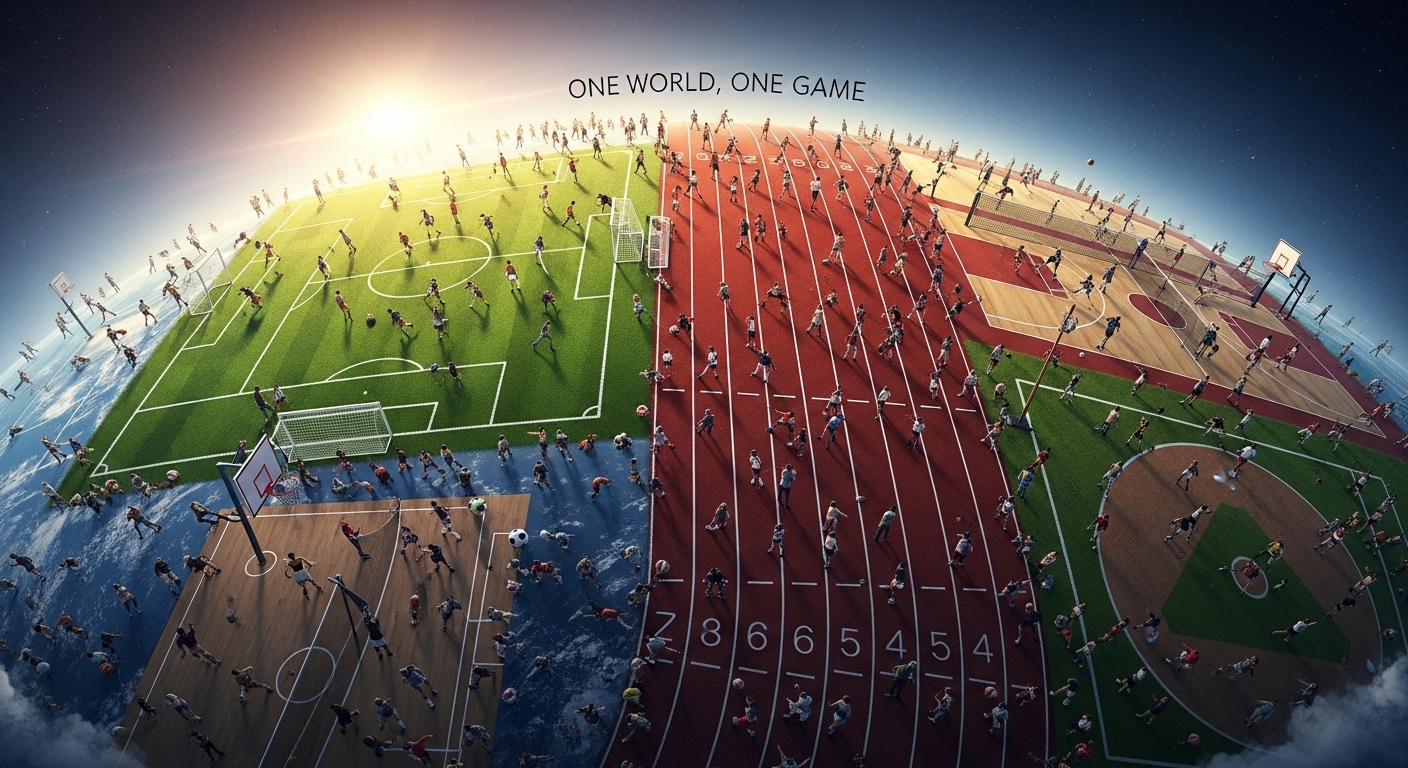Sports have always been an integral part of human culture, dating back to ancient civilizations. Over the centuries, the way we engage with, view, and participate in sports has evolved significantly. From the earliest forms of physical contests to the massive global events that we witness today, the history and development of sports is a fascinating story of human creativity, competition, and unity. In this blog post, we will explore how sports have transformed over time and the profound impact they have had on society.
The Origins of Sports: A Glimpse into Ancient Times
The origins of sports can be traced back to ancient civilizations, where athletic contests were not just forms of entertainment but also rituals and methods of preparing warriors for battle. In ancient Greece, the Olympic Games were established in 776 BCE, celebrating human excellence through physical feats. These early competitions were dedicated to the gods, and winners received crowns made of olive leaves—a far cry from the multi-million-dollar prizes athletes win today.
Similarly, in ancient Egypt, sports like archery, wrestling, and racing were commonplace. Egyptian murals depict such activities, showcasing the integral role of physical prowess in their society. Over in Mesoamerica, the Mayans and Aztecs played a unique ball game called “tlachtli,” which combined elements of basketball and soccer.
The Rise of Organized Sports in the 19th Century
While physical competitions existed throughout history, the rise of modern sports as we know them today began in the 19th century. The Industrial Revolution and urbanization played a key role in this transformation. With more structured societies and advancements in transportation, people began organizing competitions with standardized rules, leading to the formation of various leagues and associations.
One of the most notable developments during this time was the creation of football (soccer) and rugby in England. The establishment of the Football Association in 1863 laid the groundwork for the global dominance of soccer. Similarly, rugby, which originated in the same period, evolved into a major international sport.
In the United States, baseball gained popularity, eventually becoming known as “America’s pastime.” By the late 1800s, sports like tennis, cricket, and athletics had also begun to establish their own governing bodies and standardized rules.
The Globalization of Sports: The 20th Century Explosion
The 20th century marked a period of immense growth for sports, driven by the global expansion of mass media and the invention of television. Sports began to transcend regional boundaries, gaining a global following. Events like the FIFA World Cup, the Summer and Winter Olympics, and the Super Bowl became international phenomena that united millions of fans worldwide.
Television broadcasts revolutionized the way fans consumed sports, making it possible to watch major events from the comfort of their homes. This not only made sports more accessible but also turned athletes into global celebrities. Icons like Muhammad Ali, Michael Jordan, Pelé, and Serena Williams became household names, transcending the sport they played.
Sports as a Cultural and Social Phenomenon
In the modern era, sports are no longer just about competition; they have become an essential part of culture and identity. Major sporting events such as the FIFA World Cup or the Olympics transcend national boundaries, uniting people from diverse backgrounds and cultures. These events foster national pride and provide a platform for countries to showcase their athletic prowess on the world stage.
Sports also serve as a tool for social change. Figures like Jackie Robinson, who broke the color barrier in Major League Baseball, and Colin Kaepernick, who used his platform to protest racial injustice, have demonstrated the power of sports as a vehicle for activism. Beyond the professional arena, sports also play a vital role in promoting inclusivity and diversity, with many organizations working to create opportunities for underrepresented groups.
The Future of Sports: Innovation and Technology
Looking to the future, sports are poised for even greater transformation. Technology is reshaping the way sports are played, viewed, and experienced. Innovations like virtual reality (VR) and augmented reality (AR) are already allowing fans to experience events from new perspectives, while advancements in wearable technology are helping athletes optimize their performance.
Esports, or competitive video gaming, has also emerged as a significant player in the sports world, attracting millions of fans and players worldwide. With global tournaments and massive prize pools, esports is bridging the gap between traditional sports and digital entertainment.
Furthermore, sustainability is becoming a central concern for the sports industry. With growing awareness of environmental issues, major sporting events are taking steps to minimize their ecological impact. This includes using sustainable materials for stadium construction, reducing carbon footprints, and promoting green initiatives at events.
Conclusion: Sports as a Mirror of Society
Sports, in their many forms, are a reflection of society itself. They showcase the resilience of the human spirit, the pursuit of excellence, and the desire to connect with others through shared experiences. From their humble beginnings in ancient civilizations to their status as modern-day spectacles, sports have grown into a powerful global force that transcends cultures, nations, and languages.
As we look toward the future, it is clear that sports will continue to evolve and adapt to the changing landscape of technology, culture, and social progress. Whether on the field, in the stands, or through the screen, sports will remain a unifying force that brings people together in ways few other aspects of life can.



